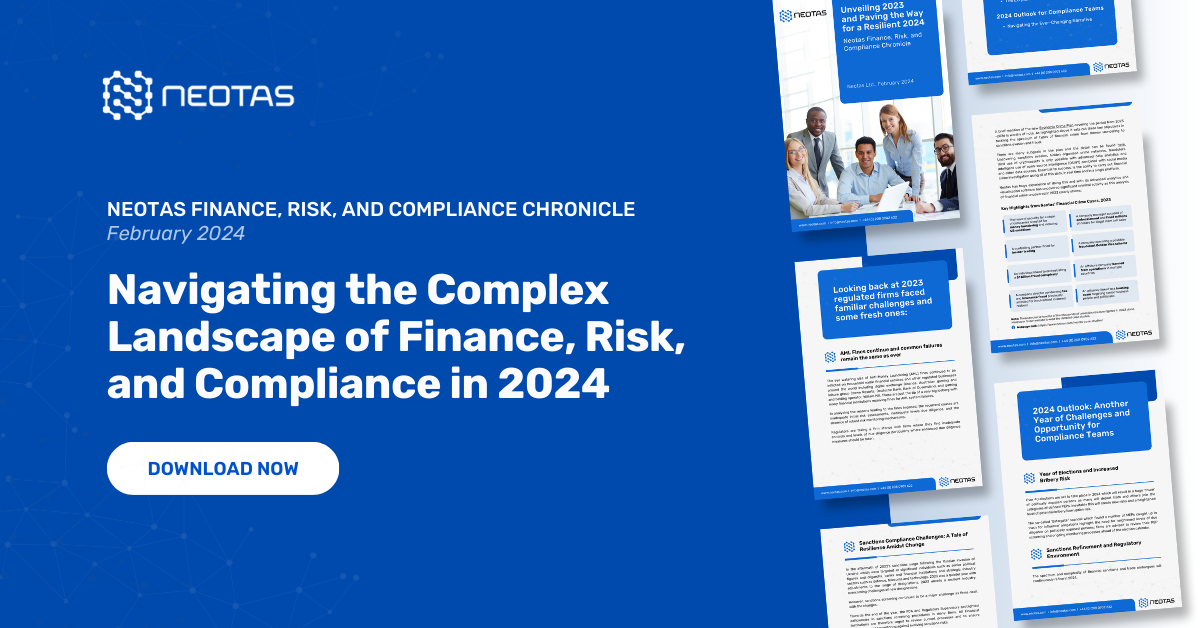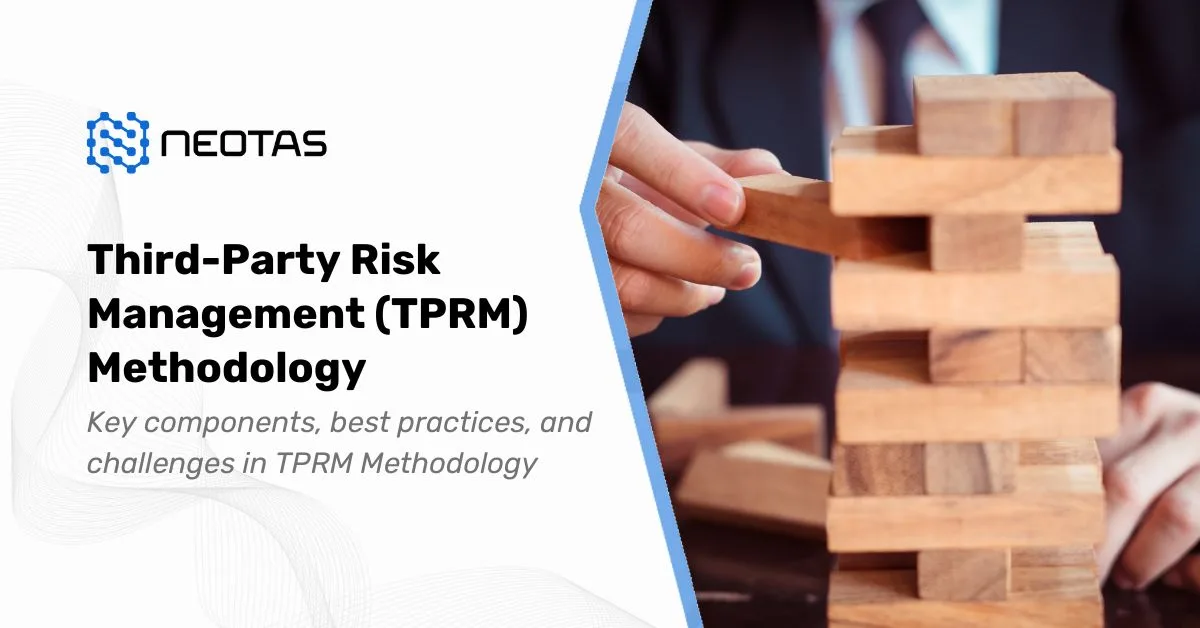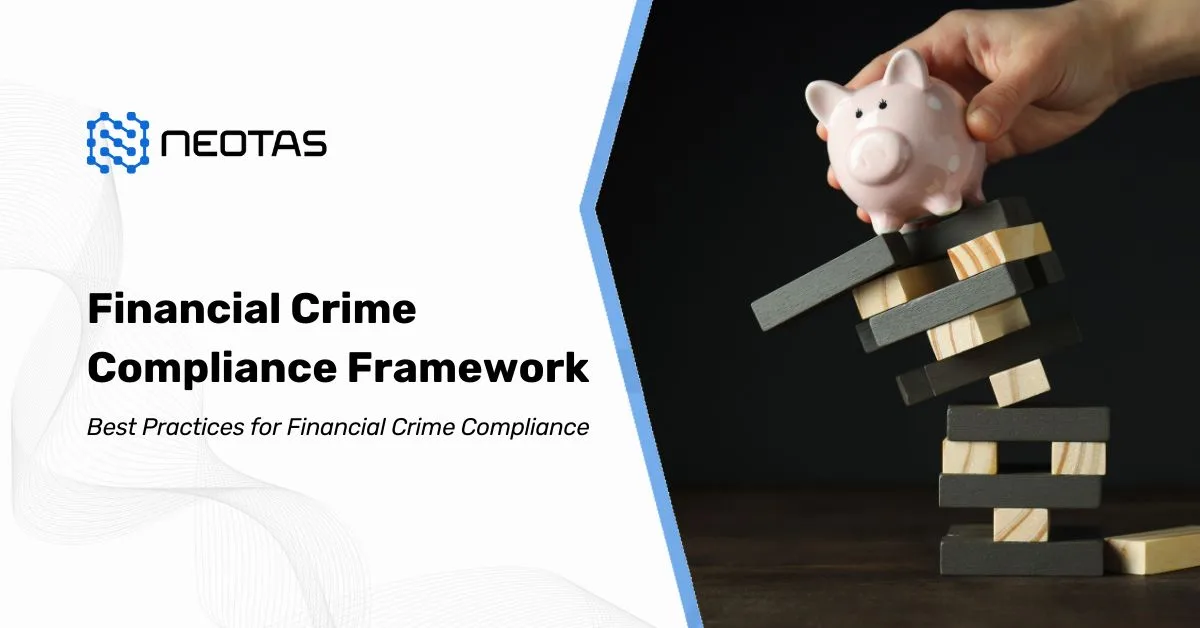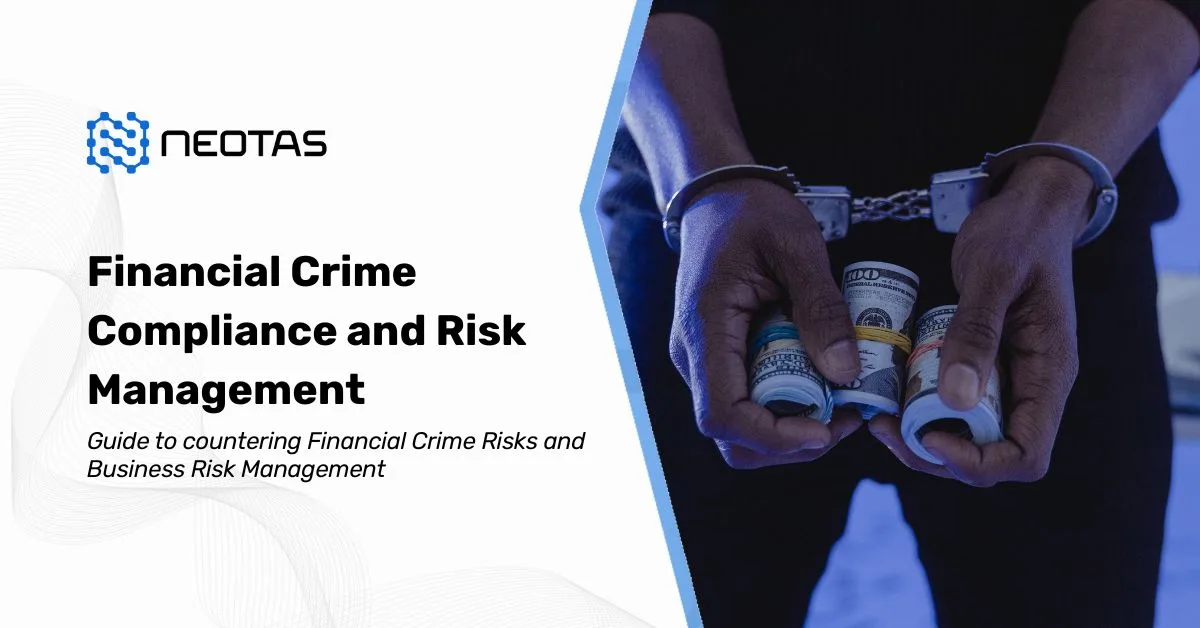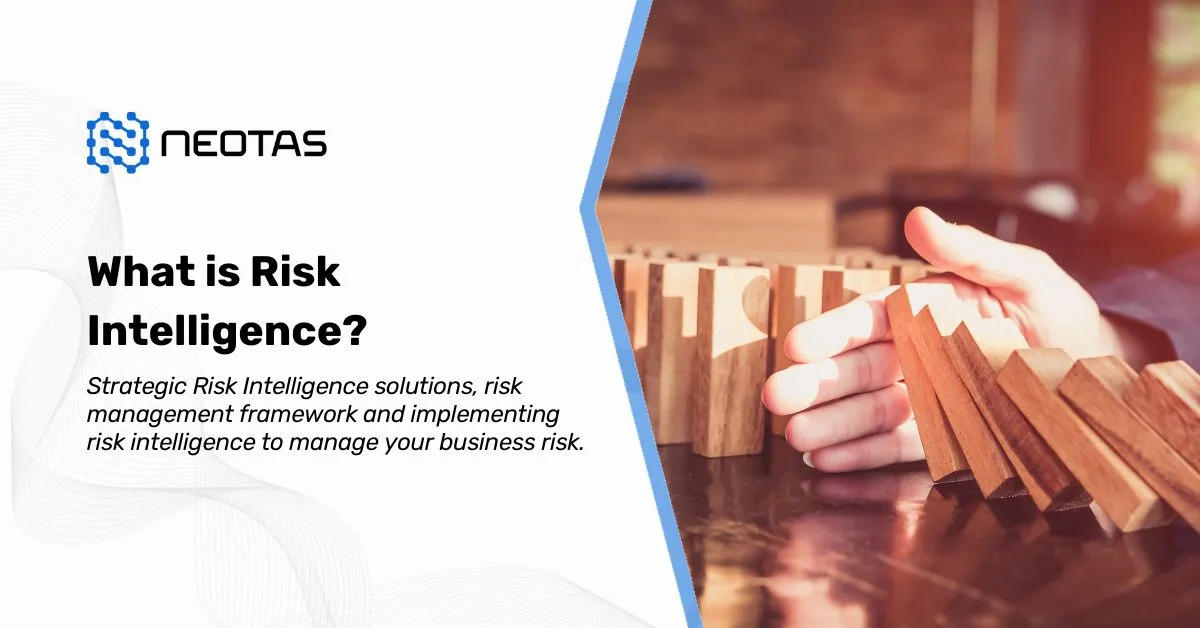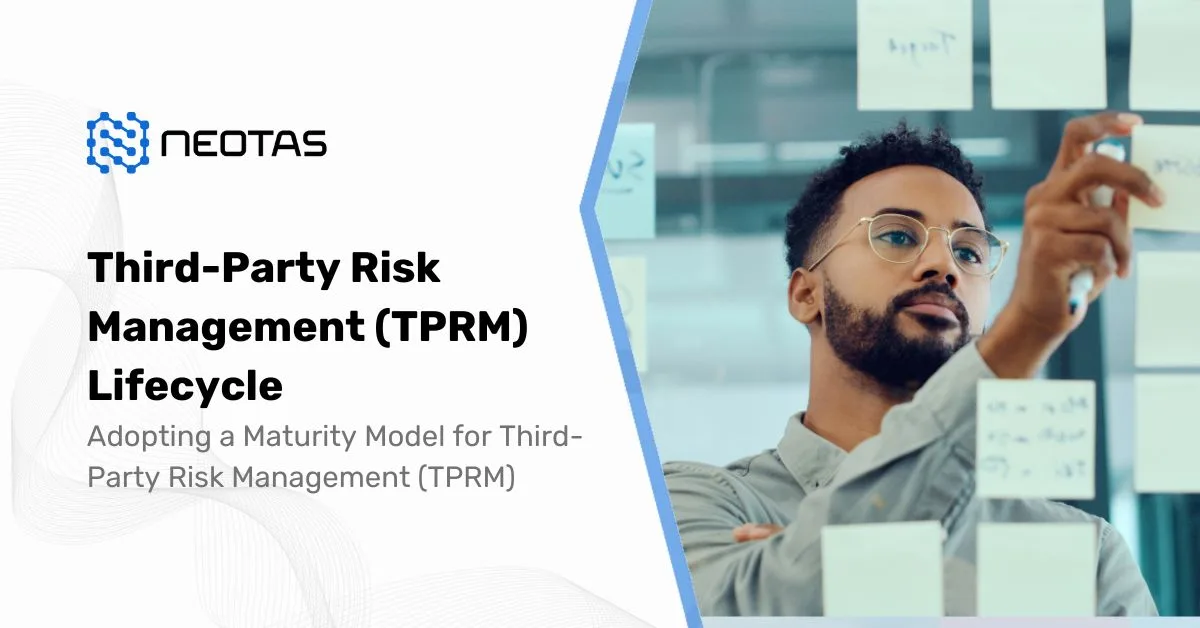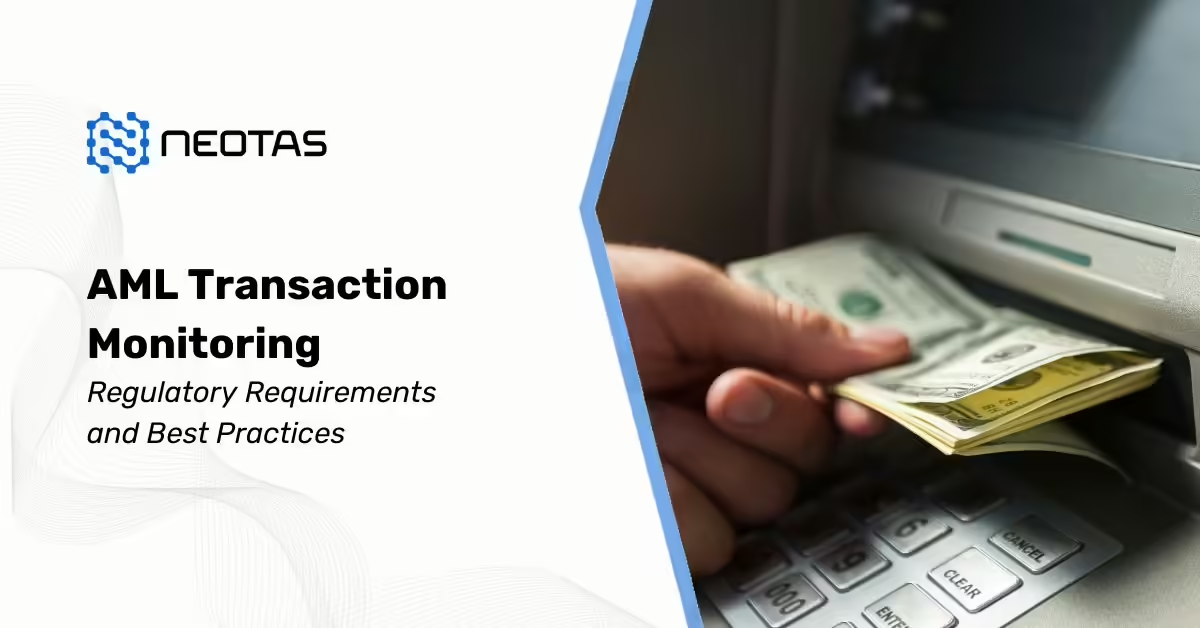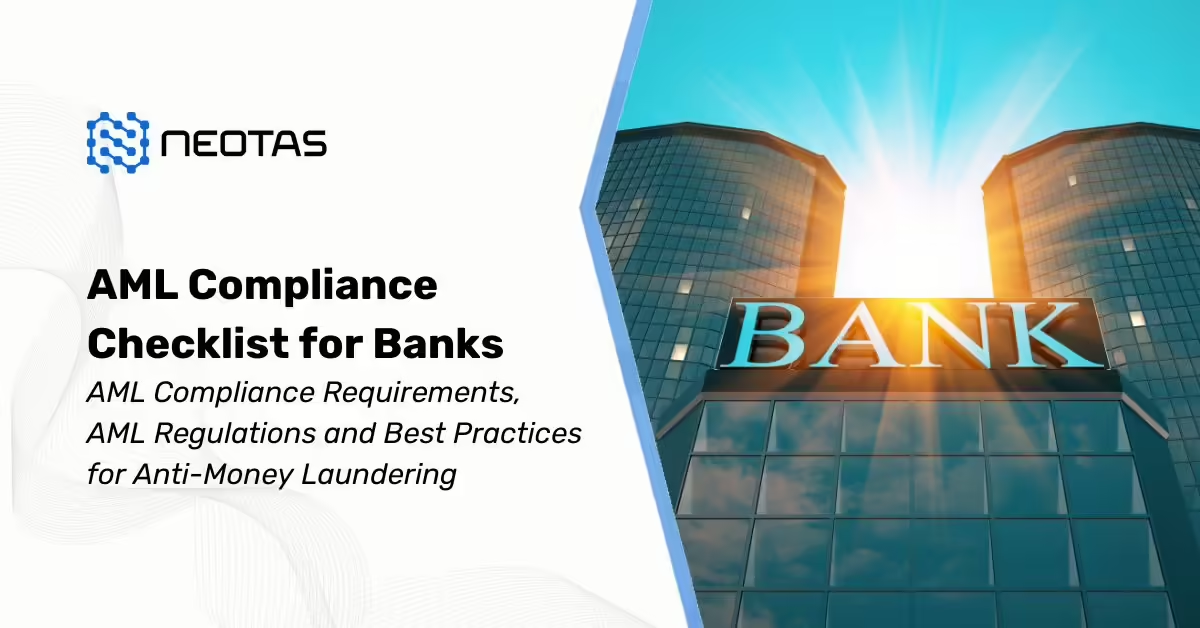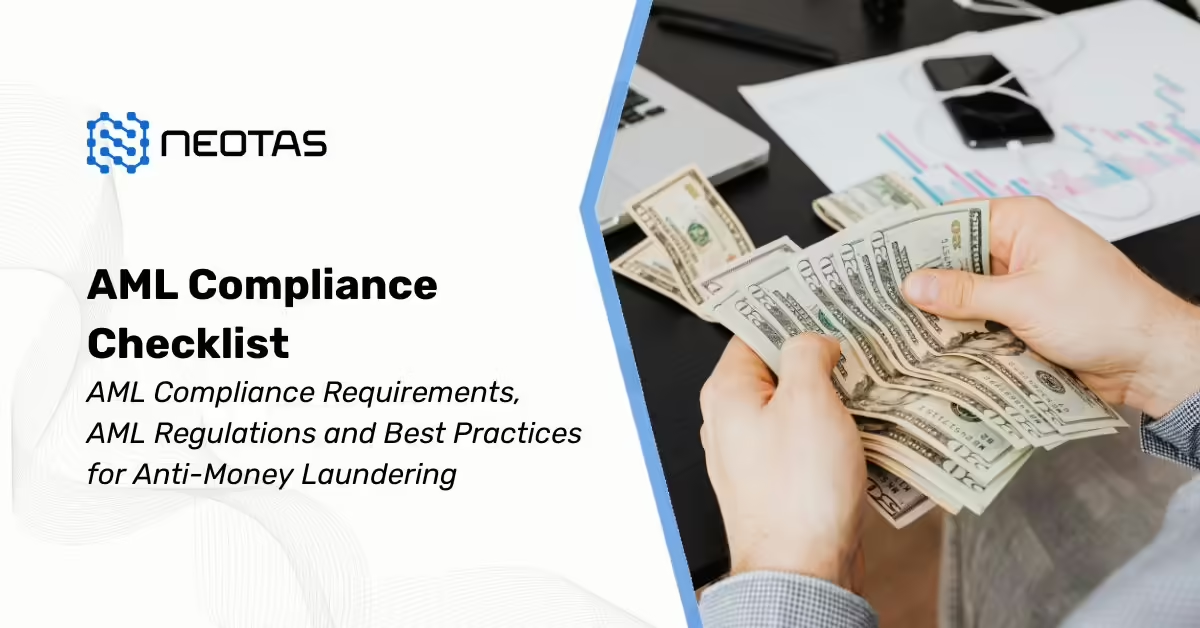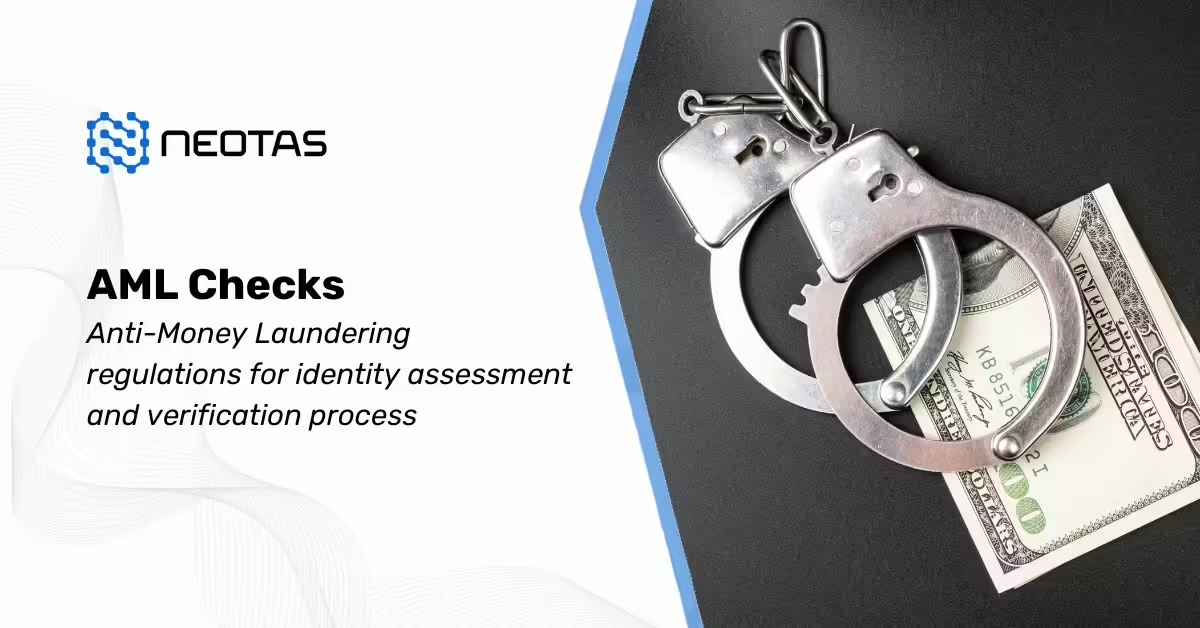AML Checks – Anti-Money Laundering regulations for identity assessment and verification process
AML checks are considered the benchmark in identity verification. They enable organisations to accurately and swiftly identify potential customers or clients, allowing them to assess risk levels before initiating any business relationship. But what exactly is involved in an AML check, and what should organisations be aware of when conducting one? This article delves into the purpose, benefits, and limitations of AML checks, explains their operation, and explores available solutions for AML checks.
What to expect from this Article:
The objective of this article is to provide a comprehensive and detailed understanding of AML checks. This guide aims to:
- Educate: Explain what AML checks are, why they are necessary, and how they fit into the broader AML framework.
- Inform: Detail the legal and regulatory landscape governing AML checks, outlining key legislations and guidelines.
- Guide: Offer a step-by-step overview of the AML check process, including customer due diligence, risk assessment, and ongoing monitoring.
- Explore: Discuss the systems and technologies that support AML checks, highlighting innovative solutions and tools.
- Examine: Address the specific application of AML checks in various sectors, including real estate and banking, to provide industry-specific insights.
- Warn: Outline the consequences of non-compliance and the challenges associated with conducting effective AML checks.
- Future Trends: Highlight emerging trends and future developments in the AML landscape, preparing readers for upcoming changes and advancements.
What is AML (Anti-Money Laundering)?
Anti-Money Laundering (AML) encompasses the laws, regulations, and procedures designed to prevent the illegal generation of funds and their integration into the legitimate financial system. AML processes are crucial in identifying and thwarting activities like money laundering, terrorism financing, and other financial crimes.
The emergence of AML practices was driven by the increasing complexity of financial crimes. Global regulatory bodies, such as the Financial Action Task Force (FATF), have set international standards to combat money laundering and terrorism financing. These standards mandate financial institutions to implement comprehensive AML programmes, ensuring they can detect and report suspicious activities effectively.
If your organisation is subject to AML regulations, investing in robust AML checks is essential. These AML checks not only help in maintaining compliance with regulations but also foster trust among customers by ensuring the security of their financial transactions.
What is an AML Check?
An AML Check, or Anti-Money Laundering Check, is a process used to verify whether an individual is engaged in money laundering activities. It is a legal obligation for companies to perform these checks on their customers to comply with anti-money laundering regulations.
The primary goal of an AML check is to ensure that individuals are not participating in illicit financial activities, such as terrorist financing or other criminal endeavours, which could jeopardise the organisation. These checks involve scrutinising personal information, including name, address, bank account details, and employment history, against relevant databases and other sources.
Organisations are required to maintain records of all AML checks performed on customers to demonstrate compliance with regulations to the AML officer if needed. This information might also need to be shared with governmental or regulatory authorities upon request, both within the UK and internationally.
Businesses must retain these records for a specified period—typically five years—to prove their adherence to AML laws and regulations to their designated AML officer.
By understanding the intricacies of AML checks and implementing them effectively, organisations can safeguard themselves against financial crimes and uphold the integrity of the financial system.
Importance of AML Checks
AML checks are integral to maintaining the integrity of the financial system. They help:
- Prevent Financial Crimes: By detecting and preventing money laundering activities, AML checks reduce the risk of financial crimes, including fraud, corruption, and terrorism financing.
- Ensure Compliance with Legal Requirements: Financial institutions must comply with AML regulations to avoid hefty fines, legal repercussions, and reputational damage. Non-compliance can lead to severe penalties and loss of business licences.
- Protect Economic Stability: Money laundering can destabilise economies by fuelling illegal activities and corrupt practices. AML checks help maintain economic stability by ensuring that financial transactions are legitimate.
Safeguard Business Reputation: Institutions with robust AML programmes are seen as trustworthy and reliable. This trust is crucial for maintaining customer confidence and securing long-term business success.
Key Components of AML Checks
AML checks involve a series of procedures that financial institutions must follow to identify and mitigate risks associated with money laundering. The key components include:
Customer Due Diligence (CDD)
- Identification and Verification: Collecting and verifying the identity of customers using reliable, independent sources. This typically involves obtaining documents like passports, driving licences, and utility bills.
- Risk Assessment: Evaluating the risk profile of customers based on factors such as geography, transaction type, and the nature of the business relationship. Higher-risk customers may require enhanced due diligence (EDD).
Ongoing Monitoring
- Transaction Monitoring: Continuously monitoring customer transactions to identify unusual or suspicious activity. Advanced analytics and machine learning tools are often employed to detect patterns indicative of money laundering.
- Regular Reviews: Periodically reviewing customer information and risk assessments to ensure they remain accurate and up-to-date.
Suspicious Activity Reporting (SAR)
- Detection and Reporting: Identifying and reporting suspicious transactions to the relevant authorities, such as the Financial Intelligence Unit (FIU). This includes transactions that appear inconsistent with the customer’s known profile or typical behaviour.
- Record Keeping: Maintaining comprehensive records of all transactions and customer interactions for a specified period, as mandated by regulations. This ensures that information is available for review during audits or investigations.
AML Training and Awareness
- Employee Training: Ensuring that employees are well-trained in AML policies, procedures, and regulatory requirements. Regular training sessions help staff stay informed about the latest money laundering techniques and AML best practices.
- Awareness Programmes: Promoting a culture of compliance within the organisation through ongoing awareness programmes and communication.
Implementing AML Checks
AML Challenges
- Evolving Threats: Financial criminals continually adapt their methods to circumvent AML measures, making it challenging for institutions to keep up with new threats.
- Data Management: Effective AML checks require comprehensive data management and analysis. Poor data quality and integration can hinder the effectiveness of AML programmes.
- Resource Constraints: Implementing robust AML programmes can be resource-intensive, requiring significant investment in technology, personnel, and training.
- Regulatory Complexity: Navigating the complex and constantly changing landscape of AML regulations can be daunting for financial institutions, particularly those operating in multiple jurisdictions.
AML Best Practices
- Leveraging Technology: Utilising advanced technologies, such as artificial intelligence (AI) and machine learning, to enhance transaction monitoring and risk assessment capabilities.
- Collaborative Approach: Working closely with other financial institutions, regulators, and law enforcement agencies to share information and best practices.
- Regular Audits: Conducting regular internal and external audits to evaluate the effectiveness of AML programmes and identify areas for improvement.
Continuous Improvement: Staying informed about the latest regulatory developments and emerging threats to continually enhance AML policies and procedures.
Why Are AML Checks Necessary?
Protection Against Financial Crime
Financial institutions and other regulated entities are often targets for money laundering activities due to the large volumes of transactions they handle. AML checks help in:
- Identifying Suspicious Activities: By monitoring transactions and customer behaviour, AML checks can flag unusual activities that may indicate money laundering or other financial crimes.
- Mitigating Risks: Assessing the risk profiles of customers helps institutions take appropriate measures to prevent illicit activities.
- Ensuring Secure Transactions: Robust AML checks contribute to the overall security and integrity of financial transactions, protecting the financial system from abuse.
Compliance with Legal Requirements
Regulatory compliance is a significant driver for implementing AML checks. Various laws and regulations mandate financial institutions to adopt AML measures to:
- Avoid Penalties: Non-compliance with AML regulations can result in severe financial penalties and sanctions from regulatory bodies.
- Fulfil Reporting Obligations: Institutions are required to file Suspicious Activity Reports (SARs) and other mandatory reports to the relevant authorities.
- Maintain Operational Licences: Compliance with AML regulations is often a prerequisite for obtaining and maintaining licences to operate in the financial sector.
Enhancing Business Reputation
Adopting strong AML practices not only ensures compliance but also enhances the reputation of financial institutions. Key benefits include:
- Building Trust: Customers and partners are more likely to engage with institutions that demonstrate a commitment to preventing financial crimes.
- Attracting Investments: Investors prefer to associate with businesses that have robust AML measures, as it reduces the risk of financial crime and associated liabilities.
- Market Competitiveness: Being seen as a compliant and secure institution enhances market positioning and competitiveness.
The AML Check Process – Step-by-Step
Customer Due Diligence (CDD)
CDD is the process of verifying the identity of customers and assessing their risk profiles. It involves:
- Identity Verification: Collecting and verifying identification documents such as passports, driving licences, and utility bills.
- Document Collection and Verification: Ensuring that the documents provided are authentic and match the information provided by the customer.
Risk Assessment
Risk assessment involves evaluating the potential risk a customer poses in terms of money laundering and terrorist financing. It includes:
- Risk Profiling: Categorising customers based on their risk levels, considering factors such as their country of residence, type of business, and transaction patterns.
- Risk Scoring: Assigning a risk score to each customer to determine the level of due diligence required.
Enhanced Due Diligence (EDD)
For high-risk customers, Enhanced Due Diligence (EDD) measures are necessary. These include:
- High-Risk Customer Analysis: Conducting a more in-depth analysis of the customer’s background, sources of funds, and business activities.
- Additional Verification Measures: Implementing additional checks and obtaining more detailed information to mitigate risks.
Ongoing Monitoring
Ongoing monitoring is essential to detect suspicious activities and ensure compliance. It involves:
- Transaction Monitoring: Continuously monitoring transactions to identify unusual or suspicious activities.
- Periodic Reviews and Updates: Regularly reviewing and updating customer information and risk assessments to reflect any changes in their profiles or behaviour.
AML Checks as Part of Perpetual KYC (Know Your Customer)
Understanding Perpetual KYC
Perpetual KYC is an ongoing process of updating and verifying customer information to maintain an accurate and current understanding of their risk profiles. Unlike traditional KYC, which is conducted at specific intervals, perpetual KYC ensures continuous monitoring and timely updates.
The Role of AML Checks in Perpetual KYC
AML checks are integral to perpetual KYC, providing continuous assessment and validation of customer identities and activities. This involves:
- Continuous Monitoring: Regularly reviewing and updating customer information to reflect any changes in their circumstances or risk levels.
- Automated Alerts: Using technology to generate alerts for any suspicious activities or deviations from normal behaviour.
- Enhanced Due Diligence (EDD): Applying more rigorous checks for high-risk customers to ensure ongoing compliance.
Benefits of Perpetual KYC
- Proactive Risk Management: Identifying and mitigating risks in real-time.
- Improved Compliance: Ensuring continuous adherence to regulatory requirements.
- Customer Trust: Enhancing customer confidence through robust and transparent processes.
- Operational Efficiency: Reducing the need for periodic re-verification by maintaining up-to-date customer information.
Read more: What is Perpetual KYC?
When to Conduct AML Checks
AML checks are essential at various stages of a customer relationship and transaction process to effectively detect and prevent money laundering and other financial crimes. Here’s a detailed breakdown of when these checks should be conducted:
1. Onboarding New Customers
Customer Due Diligence (CDD) is a critical component of AML compliance, and it begins at the onboarding stage. The key activities include:
- Identity Verification: Before establishing a business relationship, financial institutions must verify the identity of new customers using reliable and independent sources. This involves collecting and validating identification documents, such as passports, driver’s licences, and utility bills.
- Risk Assessment: Conduct a risk assessment to determine the level of risk associated with the customer. Factors such as the customer’s geographic location, occupation, and the nature of their business are considered. Higher-risk customers may trigger enhanced due diligence (EDD) requirements.
- Purpose and Nature of the Business Relationship: Understand and document the purpose and intended nature of the business relationship. This helps in assessing whether the activities and transactions align with the customer’s profile.
2. High-Value Transactions
High-value transactions are often scrutinised more closely due to their potential association with money laundering or other illicit activities. Key aspects to consider include:
- Transaction Monitoring: Implement systems to monitor large or unusual transactions that deviate from the customer’s typical behaviour. Transactions above a certain threshold should be flagged for further investigation.
- Enhanced Due Diligence (EDD): For high-value transactions, especially those involving cash or transactions with foreign entities, perform EDD to gather more detailed information and assess the legitimacy of the transaction.
- Source of Funds: Verify the source of funds for significant transactions to ensure they are not derived from illegal activities. This may involve additional documentation and verification procedures.
- Suspicious Activity Reporting (SAR): If a transaction appears suspicious or inconsistent with the customer’s profile, file a SAR with the relevant authorities, such as the Financial Intelligence Unit (FIU).
3. Periodic Reviews and Trigger Events
Periodic Reviews and trigger events are vital to maintaining an effective AML programme. These activities ensure that customer information remains up-to-date and relevant, and that any changes in the risk profile are addressed promptly.
- Periodic Reviews: Regularly review and update customer information and risk assessments to reflect any changes in their profile or activities. The frequency of these reviews depends on the risk level of the customer; higher-risk customers should be reviewed more frequently.
- Trigger Events: Certain events may necessitate an immediate review of the customer’s AML status. Trigger events include:
- Significant Changes in Transaction Patterns: Any substantial or unusual changes in transaction behaviour should prompt a review.
- Changes in Customer Information: Updates to customer details, such as a change in address, occupation, or ownership structure, may require re-evaluation.
- Regulatory Changes: Updates or changes in AML regulations may necessitate revising existing customer profiles and procedures to ensure ongoing compliance.
- External Alerts: Alerts from law enforcement agencies, news reports, or other sources indicating potential involvement of the customer in illicit activities should trigger a review.
Conducting AML checks at the right times is crucial to preventing financial crime and ensuring compliance with regulatory requirements. AML checks should be performed during the onboarding of new customers, for high-value transactions, and through periodic reviews and trigger events. By implementing these measures, financial institutions can better manage risk, maintain regulatory compliance, and protect their operations from misuse.
The Legal Framework Governing AML Checks
International Standards
International standards form the backbone of AML regulations globally, providing a unified approach to combating money laundering and terrorism financing.
1. Financial Action Task Force (FATF): The FATF is an intergovernmental body established in 1989 to set standards and promote effective implementation of measures to combat money laundering, terrorist financing, and other related threats. The FATF’s recommendations are widely regarded as the global benchmark for AML/CFT (Counter Financing of Terrorism) regulations. These recommendations cover a broad range of areas, including risk-based approaches, beneficial ownership transparency, and international cooperation.
2. European Union (EU) Directives: The EU has issued several AML directives to ensure a harmonised approach among its member states. These directives establish minimum requirements that must be transposed into national laws. The most recent, the Sixth Anti-Money Laundering Directive (AMLD6), focuses on improving and enhancing the definition of money laundering offences and penalties, expanding the scope of liability to legal persons, and improving cooperation and information sharing between member states.
National AML Regulations
Countries have developed their own specific AML regulations based on international standards to address local risks and legal frameworks. Here are key regulations in major jurisdictions:
1. USA PATRIOT Act – Enacted in response to the 9/11 terrorist attacks, the USA PATRIOT Act significantly expanded the scope of AML regulations in the United States. Key provisions include:
- Customer Identification Program (CIP): Requires financial institutions to verify the identity of individuals opening accounts.
- Suspicious Activity Reports (SARs): Mandates reporting of suspicious transactions to the Financial Crimes Enforcement Network (FinCEN).
- Enhanced Due Diligence (EDD): For accounts held by foreign financial institutions and politically exposed persons (PEPs).
2. UK Money Laundering Regulations – The UK’s AML framework is primarily governed by the Money Laundering, Terrorist Financing and Transfer of Funds (Information on the Payer) Regulations 2017, as amended. Key elements include:
- Customer Due Diligence (CDD): Financial institutions must identify and verify customers and beneficial owners.
- Risk-Based Approach: Firms must assess and manage risks associated with money laundering.
- Ongoing Monitoring: Regular monitoring of transactions and business relationships to detect suspicious activity.
3. European Union AML Directives The EU’s AML directives, particularly the Fourth, Fifth, and Sixth directives, require member states to implement measures to prevent money laundering and terrorist financing. These directives mandate:
- Risk Assessment: Identifying and assessing risks at both national and institutional levels.
- Transparency: Ensuring transparency of beneficial ownership information.
- Cooperation: Enhancing cooperation and information exchange between financial intelligence units (FIUs) and other authorities.
International AML Regulations
International regulations are designed to facilitate global cooperation and ensure consistency in AML efforts across borders. These regulations help mitigate risks arising from the global nature of financial transactions and criminal activities.
1. Basel Committee on Banking Supervision (BCBS): The BCBS provides guidelines on sound risk management practices in banks, including those related to AML. Its guidelines emphasise the importance of a robust compliance culture and effective risk management frameworks.
2. United Nations Conventions: The United Nations has established several conventions aimed at combating money laundering and terrorism financing, including the United Nations Convention against Illicit Traffic in Narcotic Drugs and Psychotropic Substances (1988) and the International Convention for the Suppression of the Financing of Terrorism (1999).
Key Legislation in Major Jurisdictions for AML Checks
1. UK AML Regulations
The UK’s approach to AML is detailed and multifaceted, reflecting both domestic priorities and international obligations. Key legislation includes:
- The Proceeds of Crime Act 2002 (POCA): This act provides the legal framework for confiscating proceeds from crime and establishes offences related to money laundering.
- The Money Laundering, Terrorist Financing and Transfer of Funds (Information on the Payer) Regulations 2017: These regulations implement the EU’s Fourth AML Directive and subsequent updates. They require firms to undertake CDD, maintain adequate records, and report suspicious activities.
2. US AML Regulations
The US AML framework is comprehensive, encompassing various statutes and regulations. Key components include:
- The Bank Secrecy Act (BSA) 1970: Also known as the Currency and Foreign Transactions Reporting Act, the BSA requires financial institutions to keep records and file reports that are useful for detecting and preventing money laundering and other financial crimes.
- USA PATRIOT Act 2001: This act enhances the BSA by requiring financial institutions to establish AML programmes, conduct CDD, and report suspicious activities. It also introduces measures to prevent money laundering related to foreign financial institutions and PEPs.
3. EU AML Directives
The EU has progressively strengthened its AML framework through a series of directives:
- Fourth AML Directive (4AMLD) (2015/849): Introduced a risk-based approach to AML, enhanced transparency requirements, and strengthened the powers of FIUs.
- Fifth AML Directive (5AMLD) (2018/843): Extended the scope to virtual currencies and prepaid cards, improved cooperation between FIUs, and increased transparency of beneficial ownership information.
- Sixth AML Directive (6AMLD) (2018/1673): Clarified and expanded the list of money laundering offences, introduced tougher penalties, and reinforced the responsibility of legal entities.For more details on EU AML Directives: https://eur-lex.europa.eu/homepage.html
The legal framework governing AML checks is complex and multifaceted, encompassing international standards, national regulations, and collaborative efforts to combat money laundering and terrorism financing. By adhering to these regulations, financial institutions can play a crucial role in maintaining the integrity of the financial system and preventing financial crimes. Continuous adaptation and vigilance are essential to keep pace with evolving threats and regulatory developments.
Consequences of Non-Compliance with AML Checks
Non-compliance with AML checks can have severe repercussions for financial institutions and businesses. The consequences include:
1. Financial Penalties
Fines and Sanctions: Regulatory bodies impose substantial financial penalties on institutions found to be non-compliant with AML regulations. These fines can range from millions to billions of dollars, depending on the severity of the violation and the size of the institution.
Increased Operational Costs: Beyond direct fines, institutions may incur significant costs related to remediation efforts, such as implementing enhanced AML controls, upgrading systems, and conducting comprehensive audits.
Restrictions on Business Activities: In some cases, regulatory authorities may impose restrictions on a company’s ability to conduct certain business activities or operate in specific markets, further impacting profitability.
2. Reputational Damage
Loss of Customer Trust: Non-compliance can erode customer confidence in the institution’s ability to protect their interests and maintain a secure environment for their transactions.
Negative Publicity: Media coverage of AML violations can lead to widespread negative publicity, damaging the institution’s brand image and leading to a loss of business opportunities.
Difficulty in Attracting New Business: Potential clients and partners may be hesitant to engage with an institution known for AML compliance issues, impacting future growth and market presence.
3. Legal Repercussions
Criminal Charges: In severe cases, institutions or individuals may face criminal charges for involvement in or failure to prevent money laundering activities. This can result in criminal convictions and further legal consequences.
Civil Suits: Affected parties, including customers and other stakeholders, may file civil lawsuits against the institution, seeking compensation for damages resulting from the non-compliance.
Regulatory Actions: Regulators may take additional enforcement actions, such as requiring more stringent AML measures, conducting ongoing supervision, or even revoking licences or permits to operate.
Challenges in Conducting Effective AML Checks
Despite the importance of AML checks, institutions face several challenges in implementing effective programmes:
1. False Positives
Excessive Alerts: AML systems often generate numerous alerts for potentially suspicious activities, many of which may be false positives. This can overwhelm compliance teams and lead to inefficiencies in addressing genuine risks.
Resource Strain: Investigating and resolving false positives can consume significant resources, including time and manpower, detracting from efforts to address real threats.
Accuracy of Detection: Ensuring the accuracy of transaction monitoring systems and reducing false positives requires ongoing calibration and tuning, which can be challenging.
2. Evolving Criminal Techniques
Sophistication of Methods: Financial criminals continually adapt their techniques to evade detection. This includes using advanced technologies and complex schemes to obscure illicit activities.
Emerging Threats: The emergence of new financial products, services, and technologies introduces new risks and challenges for AML compliance, requiring institutions to stay vigilant and adaptable.
International Coordination: Coordinating efforts to combat evolving criminal methods across jurisdictions can be challenging, as different countries may have varying approaches and capabilities.
3. Globalisation and Digitalisation
Cross-Border Transactions: The globalisation of financial markets and cross-border transactions complicates AML efforts, as institutions must navigate diverse regulatory requirements and jurisdictions.
Digital Currencies and Online Platforms: The rise of digital currencies and online platforms presents new challenges for AML checks. These technologies can facilitate anonymous transactions and require specialised monitoring tools.
Data Privacy Concerns: Balancing AML compliance with data privacy regulations can be difficult, particularly when collecting and sharing information across borders. Institutions must navigate complex legal landscapes to ensure both privacy and regulatory compliance.
Non-compliance with AML checks can result in severe financial, reputational, and legal consequences. Financial institutions must address the challenges of false positives, evolving criminal techniques, and globalisation to maintain effective AML programmes. By investing in advanced technologies, fostering international cooperation, and continually updating their AML strategies, institutions can better manage risks and ensure robust compliance with AML regulations.
Sector-Specific Considerations in AML Checks
Different sectors face unique challenges and requirements when implementing AML checks. Here’s an overview of AML checks tailored to specific sectors:
AML Checks for Estate Agents
Importance and Requirements
Estate agents are considered a high-risk sector for money laundering due to the large sums of money involved in property transactions and the potential for property to be used to launder illicit funds.
- Regulatory Obligations: In the UK, estate agents are required to comply with the Money Laundering, Terrorist Financing and Transfer of Funds (Information on the Payer) Regulations 2017. These regulations mandate that estate agents implement AML controls, including customer due diligence (CDD) and ongoing monitoring.
- High-Risk Transactions: Transactions involving high-value properties or cash payments are particularly scrutinised, as they present higher risks of being used for money laundering.
Process and Compliance
- Customer Due Diligence (CDD): Estate agents must verify the identity of buyers and sellers, understanding the source of funds for property transactions and assessing the potential risk associated with each client.
- Enhanced Due Diligence (EDD): For high-risk customers or transactions, EDD measures are required, including obtaining more detailed information about the source of funds and the nature of the transaction.
- Ongoing Monitoring: Estate agents must monitor transactions and customer activities throughout the business relationship, reporting any suspicious activity to the relevant authorities.
- Training and Procedures: Estate agents must train their staff on AML requirements and procedures, ensuring they are equipped to identify and report suspicious activities.
AML Checks in Banking
Procedures and Best Practices
Banks are critical players in the financial system and face rigorous AML requirements to prevent money laundering and terrorism financing.
- Customer Identification Program (CIP): Banks must establish robust CIP processes to verify the identity of their customers when opening accounts. This includes collecting and verifying personal information and conducting risk assessments.
- Transaction Monitoring: Banks employ sophisticated systems to monitor transactions for unusual patterns or activities. This includes automated transaction monitoring systems and analytics to detect potential money laundering.
- Suspicious Activity Reporting (SAR): Banks are required to report suspicious activities to the relevant financial intelligence unit (FIU) promptly. This includes maintaining detailed records of all transactions and suspicious activities.
- Risk-Based Approach: Banks should adopt a risk-based approach to AML, focusing more resources on high-risk customers and transactions while implementing appropriate controls for lower-risk areas.
Compliance Challenges
- Complexity of Regulations: Banks must navigate a complex regulatory environment, including national and international AML regulations, which can be challenging and resource-intensive.
- Technological Advancements: The rapid pace of technological change requires banks to continuously update their AML systems and processes to stay ahead of emerging threats.
- Data Privacy Concerns: Balancing AML compliance with data privacy regulations can be challenging, particularly in jurisdictions with strict data protection laws.
AML Checks in Finance
Role and Importance
The finance sector, including investment firms, insurance companies, and asset managers, plays a vital role in the economy and is subject to stringent AML regulations to prevent financial crime.
- Regulatory Framework: In the UK, the financial sector is governed by the Financial Conduct Authority (FCA) and must comply with the Money Laundering Regulations 2017 and other relevant legislation. In the EU, the Fifth and Sixth AML Directives provide additional regulatory requirements.
- Risk Management: Financial institutions must implement comprehensive risk management frameworks to identify, assess, and mitigate AML risks associated with their services and clients.
Key Regulations
- Anti-Money Laundering, Anti-Terrorism Financing and Know Your Customer (KYC): Regulations require financial institutions to perform KYC checks, understand their clients’ business and financial activities, and assess the risk of money laundering.
- Customer Due Diligence (CDD): Financial firms must conduct CDD, including verifying client identities and understanding the source of funds, especially for higher-risk customers.
- Enhanced Due Diligence (EDD): For clients deemed high-risk, such as politically exposed persons (PEPs) or clients from high-risk jurisdictions, firms must perform EDD, including additional scrutiny and monitoring.
AML checks are tailored to the specific needs and risks of different sectors. Estate agents, banks, and financial institutions each have unique regulatory requirements and face distinct challenges in implementing effective AML controls. By adhering to sector-specific regulations, adopting best practices, and addressing compliance challenges, these sectors can effectively manage AML risks and contribute to the global fight against financial crime.
Future Trends in AML Checks
Advances in Technology
Technological advancements are shaping the future of AML checks, including:
- Artificial Intelligence (AI): Using AI to enhance transaction monitoring and risk assessment.
- Blockchain: Leveraging blockchain technology for secure and transparent transactions.
Increased Regulatory Scrutiny
Regulatory bodies are increasing scrutiny on AML compliance, including:
- Tougher Penalties: Introducing tougher penalties for non-compliance.
- Enhanced Cooperation: Promoting greater cooperation between regulators and institutions.
Global Harmonisation of AML Standards
Efforts are underway to harmonise AML standards globally, including:
- International Collaboration: Strengthening collaboration between international bodies and regulators.
- Unified Regulations: Developing unified AML regulations to facilitate cross-border compliance.
Conclusion
The future of AML checks is driven by technological advancements, stricter regulatory requirements, and global standardisation efforts. Embracing AI, blockchain, and advanced analytics will enhance AML capabilities, while increased regulatory scrutiny and global cooperation will strengthen the overall effectiveness of AML efforts.
The Importance of Staying Compliant
Staying compliant with AML regulations is crucial for preventing financial crimes, avoiding penalties, and maintaining a strong reputation. Institutions must adopt robust AML measures and continuously monitor and update their processes to stay ahead of evolving threats.
Final Thoughts and Recommendations
To ensure effective AML compliance, institutions should:
- Implement Comprehensive AML Programs: Establishing comprehensive AML programs that cover all aspects of compliance.
- Leverage Technology: Utilising advanced technology solutions to enhance AML processes.
- Regularly Review and Update: Continuously reviewing and updating AML procedures to reflect regulatory changes and emerging threats.
By following these recommendations, institutions can effectively mitigate the risks of financial crimes and ensure compliance with AML regulations.
About Neotas Due Diligence
Neotas Platform covers 600Bn+ archived web pages, 1.8Bn+ court records, 198M+ corporate records, global social media platforms, and 40,000+ Media sources from over 100 countries to help you build a comprehensive picture of the team. It’s a world-first, searching beyond Google. Neotas’ diligence uncovers illicit activities, reducing financial and reputational risk.
AML Solutions:
- Risk-Based Approach (RBA) to AML & KYC risk management
- Anti-Money Laundering (AML) Compliance
- Anti-Money Laundering (AML) Checks
- Anti-Money Laundering (AML) Regulations
- Anti-Money Laundering (AML) Compliance Checklist
- Anti-Money Laundering (AML) Compliance Checklist for Banks
- Anti-Money Laundering (AML) Transaction Monitoring
- Money Laundering Reporting Officer (MLRO) – Roles and Responsibilities of an MLRO
- What is Customer Due Diligence in Banking and Financial Services?
Due Diligence Solutions:
- Enhanced Due Diligence
- Management Due Diligence
- Customer Due Diligence
- Simplified Due Diligence
- Third Party Risk Management
- Open Source Intelligence (OSINT)
- Customer Due Diligence Requirements
- Introducing the Neotas Enhanced Due Diligence Platform
Due Diligence Case Studies:
- Case Study: OSINT for EDD & AML Compliance
- Overcoming EDD Challenges on High Risk Customers
- Neotas Open Source Intelligence (OSINT) based AML Solution sees beneath the surface
- ESG Risks Uncovered In Investigation For Global Private Equity Firm
- Management Due Diligence Reveals Abusive CEO
- Ongoing Monitoring Protects Credit Against Subsidiary Threat
- AML Compliance and Fraud Detection – How to Spot a Money Launderer and Prevent It
- What is Customer Due Diligence in Banking and Financial Services?
FAQs on AML Checks and Regulations
What is AML (Anti-Money Laundering)?
Anti-Money Laundering (AML) refers to a set of procedures, laws, and regulations designed to prevent the generation of income through illegal actions. Money laundering is the process of making large amounts of money generated by a criminal activity, such as drug trafficking or terrorist funding, appear to be earned legitimately. The AML measures are crucial for financial institutions and other regulated entities to deter, detect, and report suspicious activities. AML policies are not only vital for compliance but also for maintaining the integrity of the financial system.
What is an AML check?
An AML (Anti-Money Laundering) check is a process used to verify the identity of individuals and assess their risk of involvement in money laundering or financial crimes.
Why are AML checks necessary?
AML checks help prevent financial crimes by ensuring that businesses and institutions are not facilitating money laundering or terrorist financing.
How do AML checks work?
AML checks involve verifying identity, assessing risk, and monitoring transactions to detect and prevent suspicious activities.
What is the AML check process?
The AML check process includes customer due diligence, risk assessment, enhanced due diligence for high-risk clients, and ongoing monitoring.
What is the legal framework for AML checks?
AML checks are governed by various regulations and laws, including the UK’s Proceeds of Crime Act 2002 and the Money Laundering Regulations 2017.
When do you need to conduct AML checks?
AML checks are required during customer onboarding, when a customer’s risk profile changes, or when suspicious activities are detected.
What are the consequences of not performing AML checks?
Non-compliance can lead to financial penalties, legal actions, and reputational damage.
What systems support AML checks?
Systems supporting AML checks include client screening tools, transaction monitoring software, and databases for sanctions and PEP (Politically Exposed Persons) lists.
Can AML checks be done online?
Yes, AML checks can be conducted online through various compliance and verification platforms.
What information is required for AML checks?
Required information typically includes personal identification details, proof of address, and sometimes additional documentation depending on the risk level.
Are AML checks required for estate agents?
Yes, estate agents are required to perform AML checks as part of their obligations to prevent money laundering in property transactions.
What is an anti-money laundering audit?
An AML audit reviews and assesses a company’s AML procedures and practices to ensure compliance with regulations.
How does a bank conduct AML checks?
Banks perform AML checks through customer identification, transaction monitoring, and by scrutinising unusual or suspicious activity.
What are AML check requirements for buying a house?
When buying a house, AML checks require identity verification, proof of funds, and sometimes additional scrutiny if the transaction is deemed high-risk.
What is AML data?
AML data includes information used for verifying identities, assessing risks, and monitoring transactions, often sourced from public records and compliance databases.

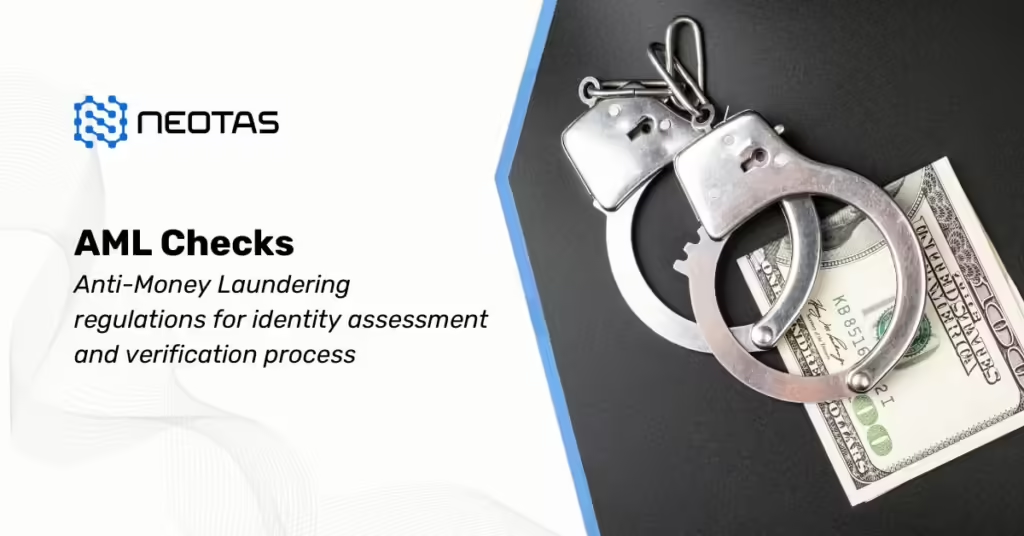

 Financial Crime Compliance Trends 2024
Financial Crime Compliance Trends 2024